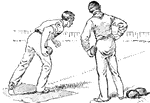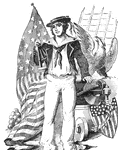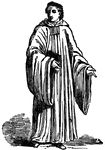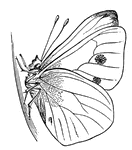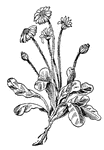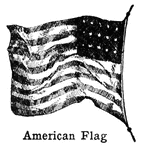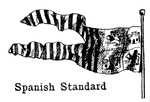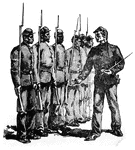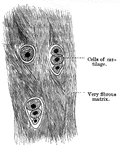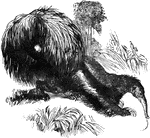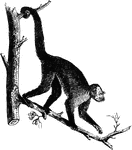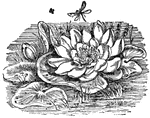
Water Lily
The White Water lily is found in all temperate climates, and attains great size in the tropics.

Lizard
Lizards are scaly reptiles, having two pairs of limbs and an elongated body, with a long, tapering tail,…
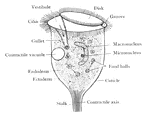
Vorticella
The vorticella is an interesting protozoan. It is found on submerged stems and leaves in stagnant water,…
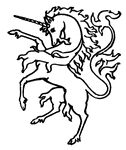
Unicorn
The unicorn is a mythological creature usually depicted as a white horse with a slender horn atop its…

Holstein Cow
Holstein cows are raised on dairy farms for dairy purposes. These cows are black and white.
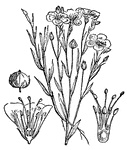
Flax. Flower and Seed-Pod
Flax is an annual plant with alternate linear-lanceolate leaves, many-flowered broad cymes, usually…

Poisonous Hemlock
Hemlock is a genus of poisonous plants. It has a tall, hollow stem and white flowers.

Landing of Captain Bailey and Lieutenant Perkins in New Orleans
Captain Bailey, bearing a flag of truce, put off in a boat, accompanied by Lieutenant George H. Perkins,…

Edward White Benson
An English clergyman, born in Birmingham, July 14, 1829. Became the archbishop of Canterbury.
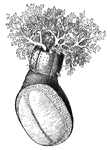
Sea-Orange
A type of sea cucumber that is a beautiful rose-color with fine white stripes running from end to end.

Papyrus
The papyprus is a frequent form in Egyptian ornament. Its straight, stiff triangular stem with four…

Athenian Lecythus
Greek Vases made especially to deposit in tombs, and are ornamented with polychrome figures on a white…

Old Church
"Desperate skirmish at Old Church, near Tunstall's Station, VA., between a squadron of the Fifth United…

Major Taylor
"Escorting Major Taylor, of New Orleans, the bearer of a flag of truce, blindfolded, to the Confederate…
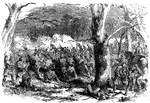
Storming of Fort Donelson
"Storming of Fort Donelson- decisive bayonet charge of the Iowa Second Regiment on the Confederate intrenchments…

Attack at Harrisonburg
"Gallant attack by 150 of the Pennsylvania Bucktails, led by Colonel Kane, upon a portion of General…

First naval battle
"First naval battle in Hampton Roads between the Confederate iron-plated steamers Merrimac, Yorktown,…

Burning of the White House
"Burning of the White House- the Federal troops, by command of General McClellan, abandoning their position…

Red Lemur
"This lemur is noted for its brillant colorings, the greater part of the body being covered with a vivid…
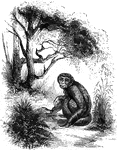
Diadem Monkey
C. diadematus. This monkey is nearly black, the lower prts being green. It is marked with a…
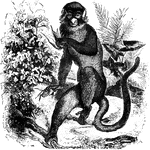
White-Nosed Monkey
C. nictitans. The nose of this monkey is not only white, but more prominent than in most monkeys.…
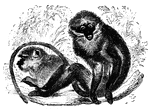
Sooty Monkey
"C. fuliginosus, has the upper parts of the body generally of a smoky gray; the lower parts…
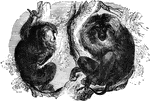
Wanderoo Monkey
"M. Silenus, has its hair deep black throughout, with the exception of the long beard mane,…
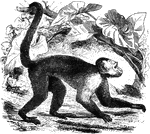
White-Throated Sai
"Genus Sajou. These creatures are somewhat smaller, but less slender that the ateles: the tail…
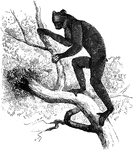
Indri
"Genus Indri: Indris. - This genus includes only a single species, the Short-Tailed Indri of Madagascar,…
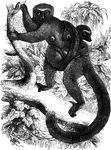
White-Fronted Lemurs
"Genus Maki: Lemur. The makis are the proper lemurs, and are distinguished by thick, soft fur,…

Ring-Tailed Bassaris
"It has a sharp, pointed nose, and a cunning expression, reminding one of a fox or raccoon. The body…

Dalmatian
"Its body is generally white, marked with numerous small round black, or reddish-brown spots. The dalmatian…
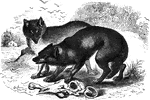
French Wolves
"The common wolf is of the size of a large dog; its usual color is a yelowish gray: the hair strong…
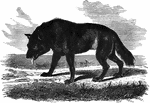
American Wolf
"The common wolf is of the size of a large dog; its usual color is a yelowish gray: the hair strong…
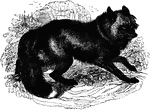
American Cross Fox
"The size is that of the common fox, the fur exceedingly long, soft, and rich; and, although presenting…

Battle at Willis Church
"Battle at Willis Church, Monday, June 30th, 1862- the Federal forces, under General Heintzelman, engaged…
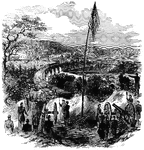
Bouquet Battery
"The Bouquet Battery, commanding the viaduct over the Patapsco River, on the Baltimore and Ohio Railroad,…
Federal Fleet
"Panoramic view of the Federal fleet passing the forts of the Mississippi, on its way to New Orleans,…

Ellsworth's Zouaves
"The departure of Colonel Ellsworth's Zouaves from New york, escorted by the fire department- the regiment…



